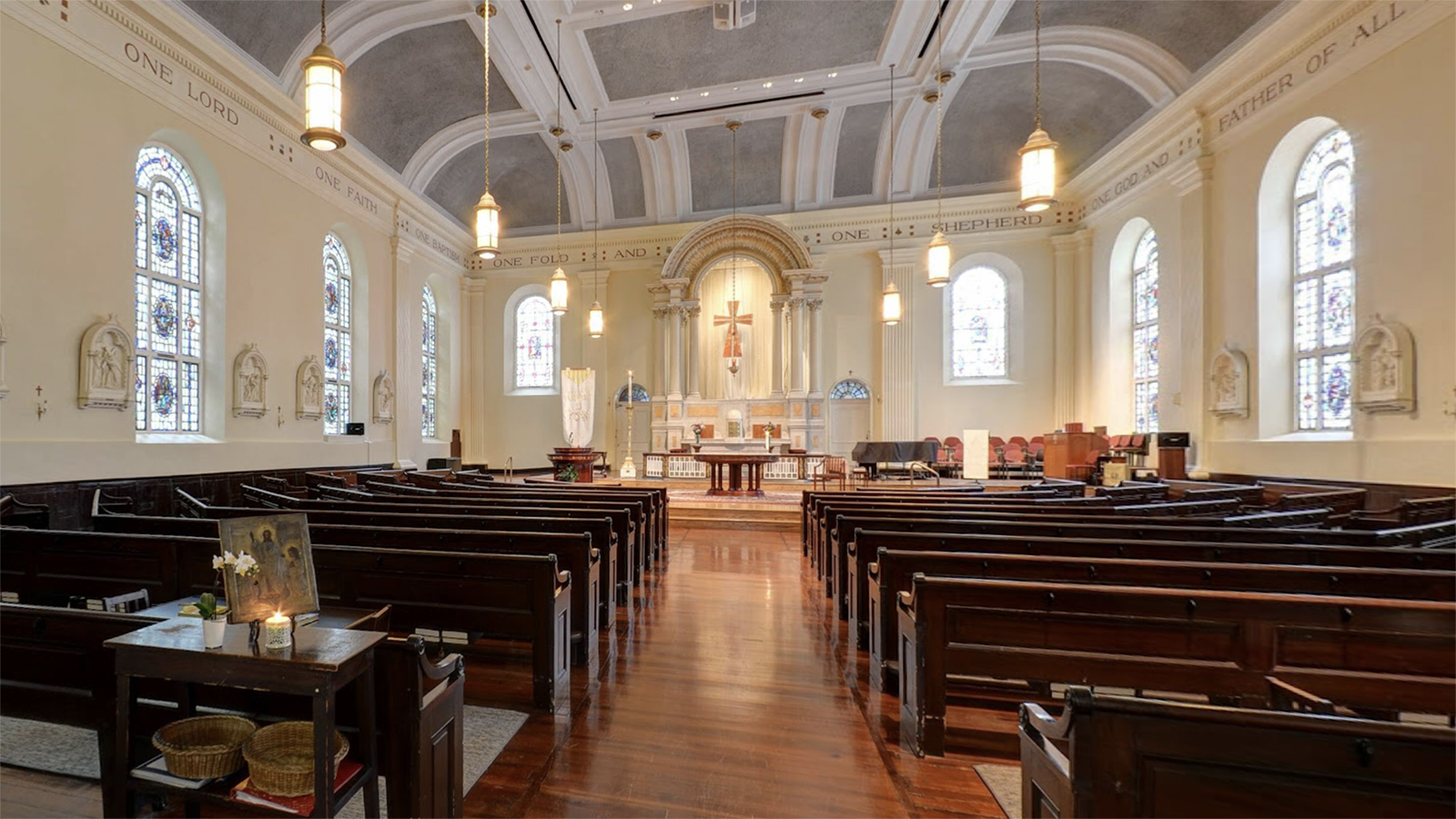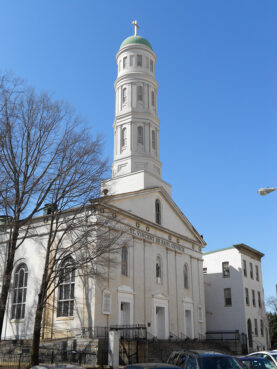
The interior of St. Vincent de Paul Church (1841), the oldest Catholic church in continuous operation in Baltimore, is among those slated to be taken out of operation. (Image courtesy of Google Maps)
(RNS) — Last Sunday (April 14), the Catholic Archdiocese of Baltimore showed parishioners its plan for downsizing its operations in Baltimore and nearby suburbs. Two years in the making, the plan would consolidate the number of parishes from 61 to 21 and reduce the number of “worship sites” from 59 to 26, affecting many of the city’s landmark churches.
Baltimore’s wider Catholic community will be given an opportunity to weigh in, but it’s hard to imagine the plan being seriously revised.
A city that once boasted a quarter of a million Catholics now has fewer than 40,000. A church infrastructure built to accommodate 25,000 worshippers has only a few thousand attending Mass regularly. Something has to give — as it’s had to give in city after city in the Northeast and Midwest that have seen their Catholic populations plummet.
The Baltimore Archdiocese calls its plan “Seek the City to Come.” As it explains: “In Hebrews 13:14, St. Paul reminds the Hebrews that they are to seek the heavenly Jerusalem. Thus, this is a call to all of us to build heaven here on earth, in our hearts, in our homes and in our City.”
Well, not exactly. The heavenly Jerusalem is to be sought, says Paul (or whoever wrote the New Testament’s Letter to the Hebrews), because “we have not here a lasting city.”

Baltimore waterfront and skyline. (Photo by Brendan Beale/Unsplash/Creative Commons)
Be that as it may, the archdiocese’s desire to use its reorganization to help its earthly city last (“it is important to focus on creating and supporting life and vitality, where neighbors look out for each other and where the needs of our people are met and where justice flourishes”) is admirable.
It also raises a critical question about what is to become of all those churches that will be shuttered.
A species of answer may be sought in a Philadelphia-based nonprofit called Partners for Sacred Places, which “brings people together to find creative ways to maintain and make the most of America’s older and historic houses of worship.” Over the years, Partners has provided technical and financial support to help many churches (and some synagogues) make themselves central to their communities via a wide range of social services as well as art exhibitions and performances.
As its longtime president, Bob Jaeger, put it last year in announcing grants of over $28 million to its National Trust for Sacred Places from Lilly Endowment, “The National Fund is not only about preserving historic houses of worship, which is enormously important, but also about building capacity within congregations so they can be self-sustaining and continue to serve their communities for many years to come.”

St. Vincent de Paul Church in Baltimore. (Photo courtesy of Wikipedia/Creative Commons)
At a conference celebrating Partners’ 35th anniversary earlier this month, there was some discussion of whether the organization is more about preserving buildings or helping often shrinking congregations. In an era when many congregation members participate in activities other than regular worship, one response was to think of “the congregation” as including the wider public that uses the building.
“It’s a return to the parish model,” noted Christopher Coble, Lilly Endowment’s vice president for religion.
But when it comes to urban Catholic churches, making social services available to the whole community has always been part of the mission. Consider the host of services provided by Baltimore’s St. Vincent de Paul, the oldest continuously operating church in the city, which “Seek the City to Come” has slated to be closed.
Where will the “congregation” that receives its services go now that the parish model that’s been operating in Baltimore for many years has proved to be unsustainable? And what will become of its historic building?
(Editor’s note: Lilly Endowment provides operating support to Religion News Service.)





